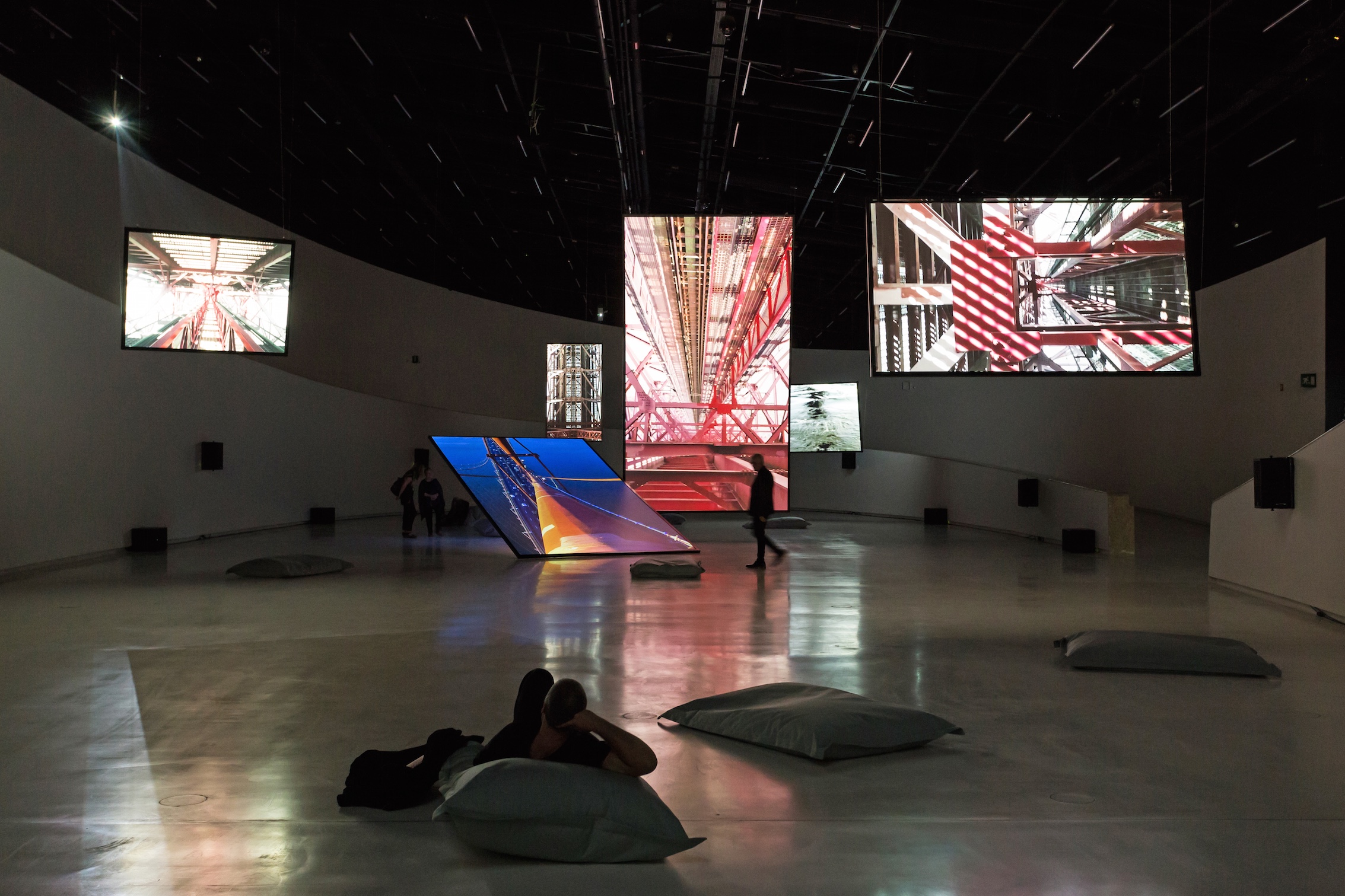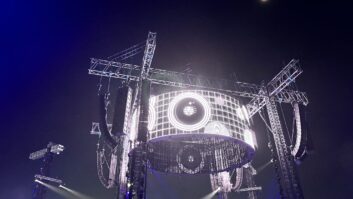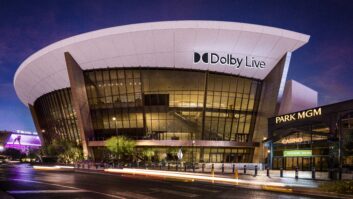
A Meyer Sound D-Mitri platform with integrated multichannel networking has been used to provide the audio for Shadow Soundings, an ambitious multimedia installation by sound artist Bill Fontana, on view at the Museum of Art, Architecture and Technology (MAAT) in Lisbon.
The install utilises cutting edge audio and video technologies to give visitors an immersive experience of the city’s 25th of April Bridge, which spans the Tagus River just upriver from the museum. The installation’s D-Mitri system comprises six frames, with one DAI-24 input frame placed on a bridge tower to carry live, HD multichannel audio back to the museum’s 800sqm Oval Gallery. The indirect ‘dark fibre’ connecting the remote frame to the main rack spanned a distance of about 21km, which is said to make it the longest connection yet deployed for hosting D-Mitri’s Ethernet-based audio network.
AVB networking is an exciting technology that enables us to transport extremely high audio quality over long distances
Scott George, Autograph Sound
Inside the museum, the D-Mitri platform served as a ‘digital brain’ tasked with implementing Fontana’s design for an all-enveloping sound experience. Using Meyer Sound’s Space Map multichannel panning software, Fontana programmed the system to dynamically assign the 10 live sounds from the bridge to 30 Meyer Sound self-powered loudspeakers mounted in and around the gallery space.
“Shadow Soundings is the most ambitious art installation I have yet created,” said Fontana. “Without Meyer Sound technologies I simply could not have created such a striking sound component. That’s due not only to extremely high quality sound but also the elegant spatial mixing available through D-Mitri and Space Map.”
For live sound sources, Fontana attached eight Earthworks condenser microphones at various locations around the bridge. In addition, he attached a Brüel & Kjær seismic CCLD accelerometer to one of the main bridge cables, digitally converting the vibrations into the unique ‘singing’ sound of the bridge. With the assistance of the Portuguese Navy, he mounted an underwater hydrophone under the surface to capture the sounds of the river and passing ships. All sound sources were connected to a D-Mitri DAI-24 and transmitted back to the museum with 24-bit/96 kHz resolution over the fibre optic link installed by Portugal Telecom.
“The bridge is an iconic structure in Lisbon,” stated Fontana. “You can see it from almost everywhere and you can even hear the singing sound of the steel grid roadway, so I absolutely did not want to compromise on audio. D-Mitri and its high-definition network ensure that we have fantastic sound quality for the live audio in the gallery.”
Assisting Fontana on the project was Scott George of London-based Autograph Sound. “AVB networking is an exciting technology that enables us to transport extremely high audio quality over long distances,” he observed, “so this greatly expands possibilities for projects where we want to get pristine audio from distant sources and bring it back to the exhibition space. I hope this will continue to grow and eventually allow us to send extremely high quality audio over networks to any point in the world.”
Inside the Oval Gallery, the 30-channel D-Mitri system connects to two concentric rings of Meyer Sound self-powered loudspeakers. In the main gallery, eight UPJ-1P loudspeakers and six UMS-1P subwoofers play a sonic choreography made from the oscillating tones of traffic over the steel grid roadway and the accelerometer picking up sonic energy from the suspension cable. A separate zone, comprising 16 UPJunior compact loudspeakers, covers the sweeping outer walkway and plays a spatial composition derived from the live hydrophone in the river. In addition, four UPJ-1P loudspeakers extend the sonic effects on the exterior façade of the building.
Cameras positioned under the roadway, on top of the south tower and directed upward from the tower base send moving images for projection onto hanging screens viewable from both sides as well as on ceiling screens.







